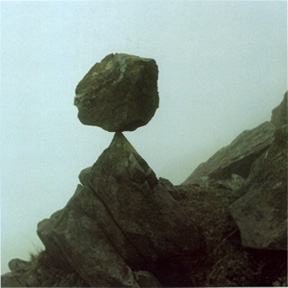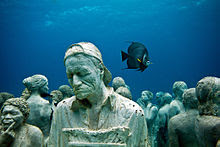Media: Concrete, volcanic rock, mosses, ferns, wetland plants, fish, steel
Dimensions: 64 by 101 by 80 in.
Date: 1996-2002
Born in 1945 in Providence, Rhode Island, Jackie Brookner was pursuing a PhD in Art History, but turned to a career in art, particularly sculpture, in 1971. Early on in her career as an artist she became fascinated with the relationship between moving water and biological processes and was increasingly driven to combine art with environmental awareness. As an environmental artist, Brookner specializes in turning waste water reclamation into public works of art and in raising awareness of the condition of public water systems.
She has created landscape-scale artwork involving urban biospheres; however, Brookner is best known for her living artwork that is both biological and functional in nature. Her unique "biosculpture" "Prima Lingua" is a biological microcosm and water filtration system in form of a giant tongue, designed to showcase natural water regeneration processes. "It's almost like a totem to have that kind of power to stimulate the human forces, the human will, to want to pay attention to our connection to water," she says. "The fact that we are water -- we're 75 percent to 80 percent water, depending on how old you are -- every living thing is water, so water is the thing that really links us all."
Artist's website:
http://www.jackiebrookner.com/









